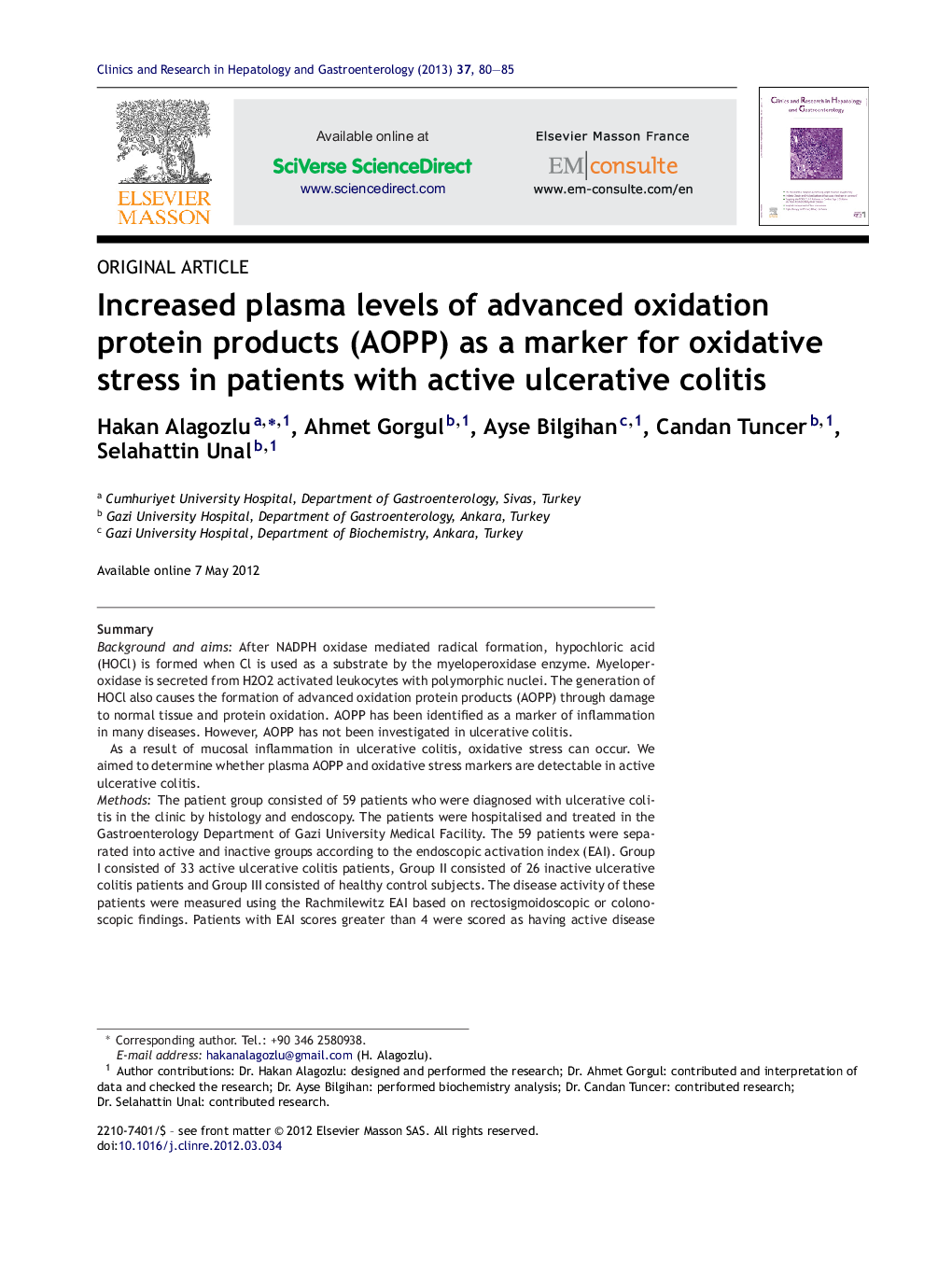| Article ID | Journal | Published Year | Pages | File Type |
|---|---|---|---|---|
| 3286764 | Clinics and Research in Hepatology and Gastroenterology | 2013 | 6 Pages |
SummaryBackground and aimsAfter NADPH oxidase mediated radical formation, hypochloric acid (HOCl) is formed when Cl is used as a substrate by the myeloperoxidase enzyme. Myeloperoxidase is secreted from H2O2 activated leukocytes with polymorphic nuclei. The generation of HOCl also causes the formation of advanced oxidation protein products (AOPP) through damage to normal tissue and protein oxidation. AOPP has been identified as a marker of inflammation in many diseases. However, AOPP has not been investigated in ulcerative colitis.As a result of mucosal inflammation in ulcerative colitis, oxidative stress can occur. We aimed to determine whether plasma AOPP and oxidative stress markers are detectable in active ulcerative colitis.MethodsThe patient group consisted of 59 patients who were diagnosed with ulcerative colitis in the clinic by histology and endoscopy. The patients were hospitalised and treated in the Gastroenterology Department of Gazi University Medical Facility. The 59 patients were separated into active and inactive groups according to the endoscopic activation index (EAI). Group I consisted of 33 active ulcerative colitis patients, Group II consisted of 26 inactive ulcerative colitis patients and Group III consisted of healthy control subjects. The disease activity of these patients were measured using the Rachmilewitz EAI based on rectosigmoidoscopic or colonoscopic findings. Patients with EAI scores greater than 4 were scored as having active disease (Group I). Patients with EAI < 4 were scored as being in disease remission (Group II). The control subjects (Group III) were 51 healthy individuals. The plasma AOPP levels were measured using a spectrophotometric method.ResultsThere were no statistically significant differences in gender (P < 0.22) and age (P < 0.11) between the groups examined. The plasma AOPP level in Group I was 148.72 ± 9.08 μmol/L. The plasma AOPP level in Group II was 74.48 ± 7.06 μmol/L, and the plasma AOPP level in Group III was 64.93 ± 2.55 μmol/L. The AOPP levels in Group I were statistically different than in Group II and III (P < 0.05). The AOPP levels were similar between Group II and Group III (P > 0.05). The EAI value was 8.84 ± 0.31 in Group I and 2.76 ± 0.08 in Group II. There were statistically significant differences for EAI between groups (P < 0.05). The correlation between AOPP and EAI in all patients with ulcerative colitis were statistically significant (P < 0.05, r = 0.61). The regression model in this correlation was statistically significant (y = 49.68 + 10.75x, P < 0.05).DiscussionBased on our results, we suggest that AOPP could be used as a non invasive activation marker for ulcerative colitis patients.
